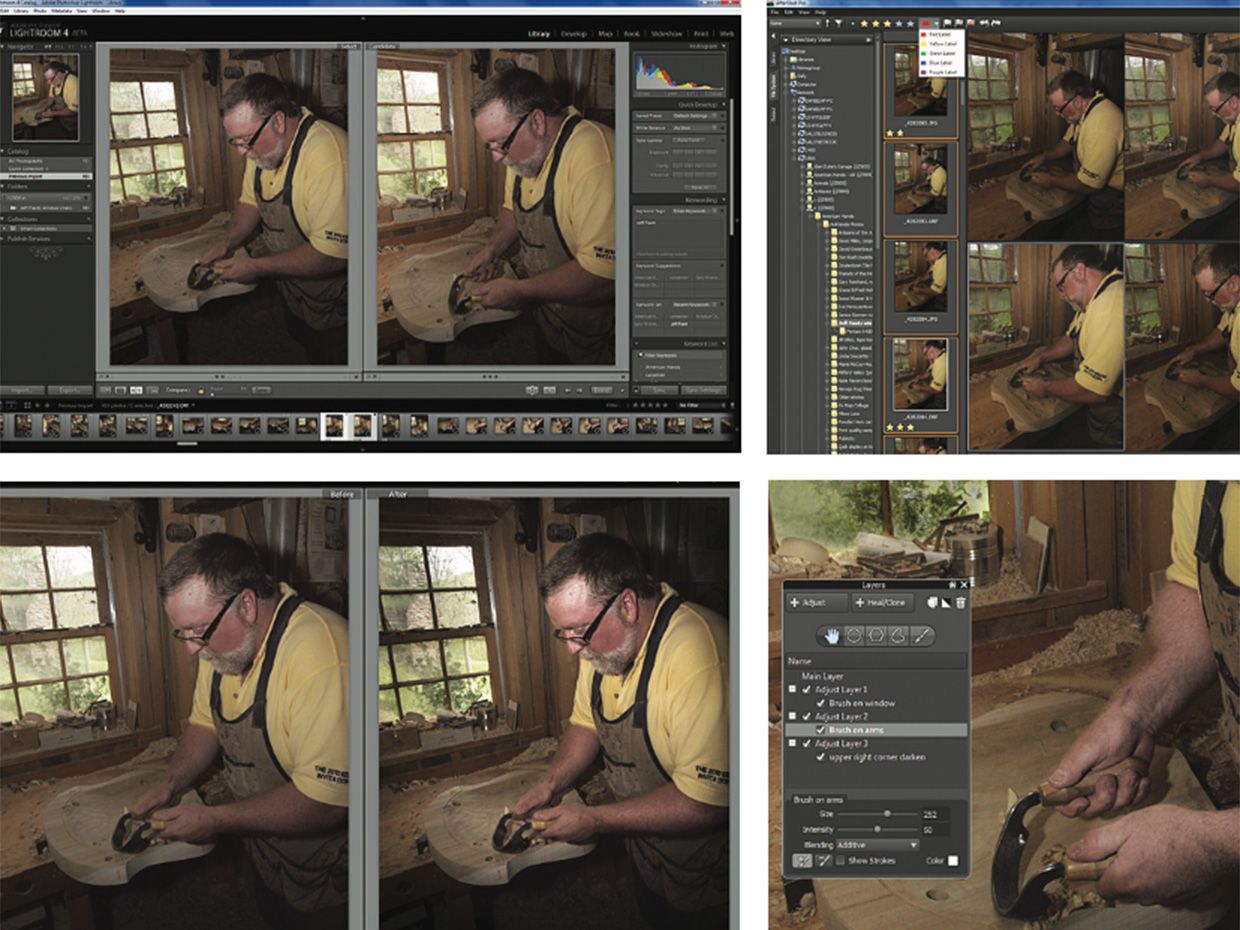Adobe Lightroom and Corel AfterShot Pro
Two programs can help you get your photo house in order
It used to be an effort to take pictures and get them developed and easy to keep and show them. Today, it’s the other way around—pictures are easy to take, and as a result, we’re swimming in them. Drowning, even. Every time we shoot another thousand or so at a simple birthday party, we’re left with a major task—sorting out the best ones, then editing and sharing them.
Fortunately, help is on the way: workflow software of the sort used by professional photographers is now filtering out to the masses in the form of a US $100 program, Corel AfterShot Pro. The most popular professional software, Adobe Photoshop Lightroom, a mature product ($150 for version 4), is smoother and more versatile. But the scrappy newcomer has a nice selection of photo tools that will satisfy many users.
Here’s how it works. You know that somewhere among those hundreds of pictures you took at the birthday party lurk a few gems—if only you could find them. Both Lightroom and AfterShot enable fast comparing and sorting. Lightroom’s two-up side-by-side display compares a “select” image to a candidate. You can quickly zoom into details, swap out a new select or candidate, and rate each using one to five stars and color flags (plus add keywords, if you didn’t do that automatically on import). Then, you can view, say, all the photos three stars or higher. AfterShot displays up to six images side by side, but swapping out images requires more steps.
File Formats
Both Lightroom and AfterShot Pro are known as RAW workflow programs. If you, like most serious photographers, shoot RAW, you’ll want to be sure the software you choose supports your camera. We found that AfterShot Pro doesn’t support as many RAW file formats as Lightroom does, but Corel is adding more formats on an ongoing basis.
Both programs work well with TIFF and JPEG images, though AfterShot Pro supports such files only in RGB, and only up to 40 megapixels. In addition, AfterShot doesn’t support video files, while Lightroom does.
Editing in Lightroom or AfterShot Pro can also be quite fast, with top-notch exposure, color, tone, and detail tools. If, for instance, you take a series of photos under the same lighting, using similar exposure settings, you can modify one picture and apply those edits to all the others.
Both programs edit “nondestructively,” leaving your original image untouched. Here’s where AfterShot has a bit of an advantage: It uses layers to apply edits, and extends its nondestructive editing to special effects filters. Lightroom doesn’t have layers, and though it supports important third-party filters (such as Nik Software Silver Efex Pro), the filters aren’t nondestructive.
Finally, what use are photos without sharing and printing? This time, Lightroom has the edge, with more output options: Web gallery, photo book, slideshow, prints with multiple-size images on a single sheet (if you wish), and easy upload to Facebook and YouTube. AfterShot does an excellent job of saving a series of photos (even while you continue to edit other pictures), custom or template-based printing (including multiple-size images per sheet), and creating a nice Web gallery.
